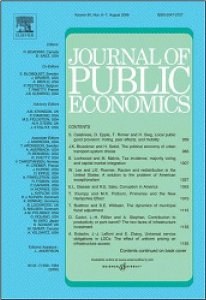
van der Ploeg, F. and Withagen, C. (2012). Too Much Coal, too little Oil Journal of Public Economics, 96(1-2):62--77.
-
Affiliated authorsRick van der Ploeg, Cees Withagen
-
Publication year2012
-
JournalJournal of Public Economics
Our main message is that it is optimal to use less coal and more oil once one takes account of coal being a backstop which emits much more CO2 than oil. The way of achieving this is to have a steeply rising carbon tax during the initial oil-only phase, a less-steeply rising carbon tax during the intermediate phase where oil and coal are used alongside each other and the following coal-only phase, and a flat carbon tax during the final renewables-only phase. The 'laissez-faire' outcome uses coal forever or starts with oil until it is no longer cost-effective to do so and then switches to coal. We also analyze the effects on the optimal transition times and carbon tax of a carbon-free, albeit expensive backstop (solar or wind energy). Subsidizing renewables to just below the cost of coal does not affect the oil-only phase. The gain in green welfare dominates the welfare cost of the subsidy if the subsidy gap is small and the global warming challenge is acute. Without a carbon tax a prohibitive coal tax leads to less oil left in situ and substantially delays introduction of renewables, but curbs global warming substantially as coal is never used. Finally, we characterize under general conditions what the optimal sequencing oil and coal looks like. {\textcopyright} 2011 Elsevier B.V.